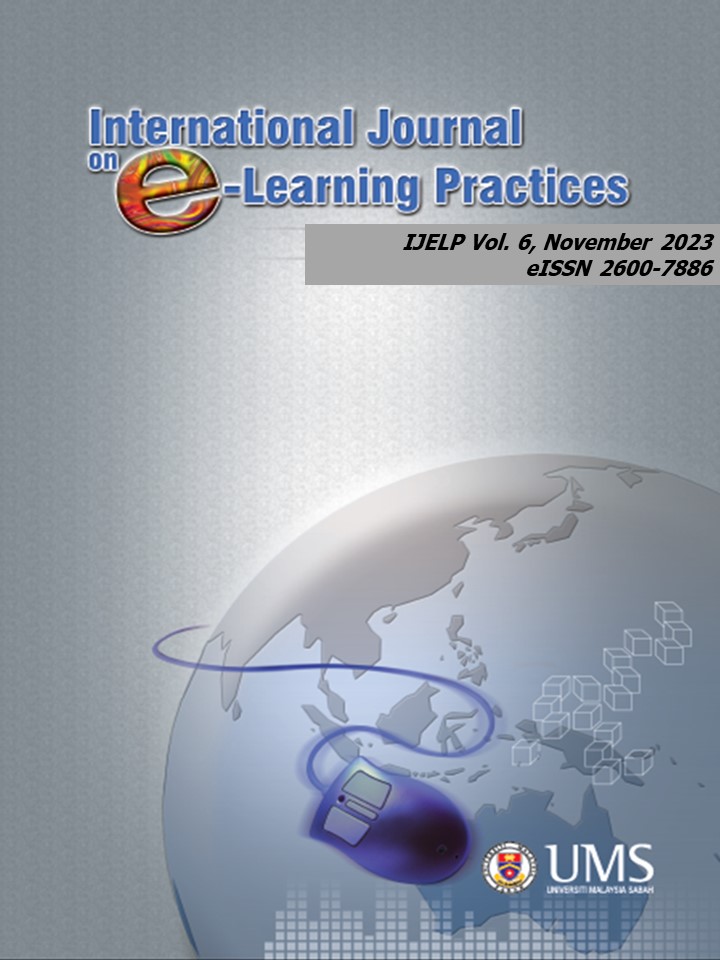The Trends in E-learning Implementation in Tertiary Education: A Review of Blended Learning in China and Other Countries
DOI:
https://doi.org/10.51200/ijelp.v6i1.4561Keywords:
blended learning, higher education, On-line education, teaching design, teaching reformAbstract
Blended learning is a combination of online learning and face-to-face learning. It is an important trend in the development of tertiary education in China and foreign countries. In recent years, the discussion of blended learning gradually moves from theory to practice, and more and more college teachers begin to pay attention to blended teaching design and put it into practice. This study attempts to give an overview on the topic of blended learning in tertiary education, with a comparison of Chinese and global perspectives. By using “blended learning” and “higher education” as the theme word, and through the advanced search function in CNKI (Core of Peking University /CSSCI) and Scopus database, this paper retrieved 356 and 2293 relevant journals respectively from 2004 to 2023. Utilizing a comparative approach, this study compared the retrieved data from CNKI and Scopus, sorted out the research context in China and foreign countries, analyzed the current research hot-spots, research topics and research trends of blended teaching in tertiary education using a comparative approach, and provided references for the future research in this field. The result showed that the research hot-spots includes the effectiveness of blended learning, blended learning models, blended learning strategies, and influencing factors of blended learning adoption. Furthermore, the study demonstrated a shift in research focus, from initial discussions to investigations into its pedagogical implications.
References
Allen, I. E., & Seaman, J. (2003). Sizing the opportunity: the quality and extent of online education in the United States, 2002 and 2003. Sloan Consortium, 23, 659-673.
Bake, J. W. (2000). The “Classroom Flip”: using web course management tools to become the guide by the side. In 11th International Conference on College Teaching and Learning, 9-17.
Bliuc, A. M., Goodyear, P., & Ellis, R. A. (2007). Research focus and methodological choices in studies into students' experiences of blended learning in higher education. Internet & Higher Education, 4, 231-244.
Bonk, C. J., Graham, C. R., Cross, J., et al. (2009). The handbook of blended learning: global perspectives, local designs. Turkish Online Journal of Distance Education, 4, 181-181.
El Habti, F. E., Chrayah, M., Bouzidi, A., & Ali, H. A. (2022). Blended learning platform model. In Proceedings of the 12th International Conference on Virtual Campus (JICV 2022).
Garrison, D. R., & Kanuka, H. (2004). Blended learning: uncovering its transformative potential in higher education. The Internet and Higher Education, 7(2), 95-105.
Goodyear, V., & Dudley, D. (2015). "I'm a lacilitator of learning!" understanding what teachers and students do within student-centered physical education models. Quest, 3, 274-289.
He, K. K. (2004). The new development of educational technology theory from the perspective of blended teaching. Technical Education in Primary and Secondary Schools, 4, 18-42.
Hew, K. F., & Cheung, W. S. (2014). Students’ and instructors’ use of massive open online courses (MOOCs): Motivations and challenges. Educational Research Review, 12, 45-58.
Hrastinski, S. (2019). The educational landscape of blended learning: Contemporary views. Educational Technology Research and Development, 67(2), 387-405.
Huang, R., Ma, D. Zheng, L. Q., & Zhang, H. S. (2009). Theory of course design based on blended learning. Research in Distance Education, 2009(1), 9-14.
Li, F. Q. (2016). The theoretical foundation and instructional design of blended teaching. Modern Educational Technology, 9, 18-24.
Liu, Y. (2021). Blended Learning of management courses based on learning behaviour analysis. International Journal of Emerging Technologies in Learning, 16(9), 150–165.
Luo, Y. H. (2019). Construction and practice exploration of blended teaching model in higher education. Exploration of Higher Education, 12, 48-55.
Mayo-Cubero, M. (2021). Teaching innovation experience for COVID-19 times: a case study on blended learning of television journalism courses with moodle. Asia Pacific Media Educator, 31(2), 178–194.
Nikolopoulou, K., & Zacharis, G. (2023). Blended learning in a higher education context: exploring university students’ learning behavior. Education Sciences, 13(5), 514.
Picciano, A. G. (2006). Blended learning: Implications for growth and access. Journal of Asynchronous Learning Networks, 10(3), 95-102.
Picciano, A. G. (2009). Blending with purpose: The multimodal model. Journal of Asynchronous Learning Networks, 13(1), 7-18.
Rong, M., & Peng, X. H. (2015). Historical development, current Status, and analyzing practical strategies of flipped classroom. China Distance Education, 2015(7), 108-115.
Saeed, S. (2022). Teaching clinical skills using online modality through modified Peyton’s framework: An experience from a medical university in Pakistan. Journal of Advances in Medical Education and
Professionalism, 11(1), 15-23.
Tang, Z. M. (2023). Exploration of the application of blended teaching in college curriculum
instruction. Journal of Shenyang Institute of Engineering (Journal Title in English), 19(3), 112-116.
Tian, F. P., & Jiao, D. L. (2005). Exploring the practice of blended teaching model in higher education under the informationized environment. Research in Distance Education, 4, 63-65.
Vaughan, N. D. (2007). Perspectives on blended learning in higher education. International Journal on E-Learning, 6 (1), 81-94.
Vaughn, N. D., & Garrison, D. R. (2012). Blended learning in higher education. Journal of Virtual Learning in Medical Sciences, 7, 68-69.
Cooney, M. H., Gupton, P., & O’Laughlin, M. (2000). Blurring the lines of play and work to create blended classroom learning experiences. Early Childhood Education Journal, 27(3), 165-171.
Wasoh, F. (2016, November 17). Exploring the Roles of Blended Learning as an Approach to Improve Teaching and Learning English. Retrieved from http://web.a.ebscohost.com/ehost/pdfviewer/pdfviewer?sid=27144a22-f991-47c4-a39e-94160e6ce0a9%40sessionmgr4007&vid=0&hid=4214 .
Xie, X. S, & Zhu, Z. L. (2012). Analysis of factors influencing the quality of blended teaching in higher education. China Distance Education, 10, 9-14, 95.
Yen, J. C., & Lee, C. Y. (2011). Exploring problem solving patterns and their impact on learning achievement in a blended learning environment. Computers & Education, 1, 138-145.
Yu, S. Q. (2005). Blended teaching in the online environment: A new teaching model. University Teaching in China, 10, 55-56.






